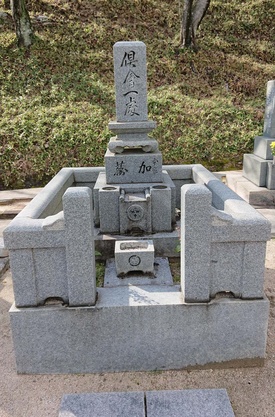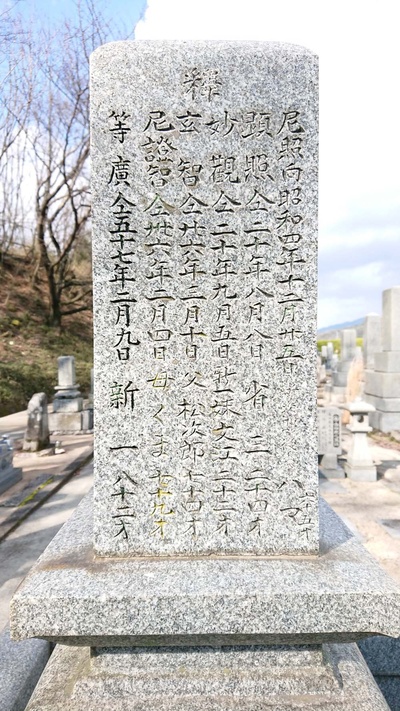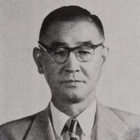Harada Tomin confirms death
Even after turning 80, Shinichi Kato was still devoted to peace activities such as disarmament issues. He died suddenly of a cerebral infarction at his home on the morning of February 9, 1982. His wife, Akiko, was born in the United States and preferred a modern lifestyle. The couple, who had lived in the United States for a long time, were open and harmonious, and even shared a bedroom.
That morning, Yoshida's nephew, Akiko, called the house of Kato to say that her husband, Shinichi, looked strange in bed. When Yoshida and his mother, Harue (Shinichi's sister), rushed to the house, they found Shinichi lying on the bed with his mouth open.
The hospital director, Harada Hospital, about one kilometer away, had already been contacted and was already on his way. The hospital director, Tomin Harada (1912-1999), had been a military doctor during the war, but returned to his hometown of Hiroshima in the spring of 1946, the year after the atomic bombing, and opened a hospital there to treat victims of the bombing. He was also a famous peace activist as well as a doctor, inviting children injured in the Vietnam War to Japan to receive treatment.
Harada, who was on close terms with Kato, who was also dedicated to peace activities, was the one who confirmed Kato's death at the scene.
Rest in a cemetery on a small hill
Kato's funeral was held the following day, the 10th, at Enryuji Temple, his family temple in Teramachi, near his home, and his remains were buried in the cemetery within the grounds of Enryuji Temple. After her husband's death, Akiko lived alone for a while, but her only son, Nao (Kenneth), had been planning to live in Los Angeles until his death in the United States, where she spent her final days.
As a result, the care of the Kato family grave was entrusted to his sister Harue and Yoshida. Harue also passed away in 2015. Yoshida thought about the future and moved the Kato family grave to a city-run cemetery near his home where the Yoshida family grave is located.
After hearing Yoshida's story, I wanted to see the grave, and when he offered to show me around, I went to a nearby cemetery by car. The Kato family grave was located in a section of the cemetery with a good view on top of a small hill.
The gravestone, which has legs like an ihai, has the words "Kukaiichidokoro" engraved vertically, and underneath it, "Honke Kato" is engraved horizontally from the right. "Kukaiichidokoro" is pronounced "Kueissho" and is a phrase that appears in the "Buddha's Speech Amida Sutra." It means "to meet together in one place," and is said to mean that they will meet again in the Pure Land. Like "Namu Amida Butsu," it is a phrase that is carved on gravestones of the Jodo Shinshu and Jodo sects.
If you go around to the back of the tombstone, under the single character "Shaku" you will find the posthumous name following Shaku, as well as the date of death, name and age at death of the Kato family members whose remains were buried in the tomb. The faded part of the character "Shaku" tells us the history of the tomb.
They are lined up from the right in the order of who died first. On the far right is "Hama," Kato Shin'ichi's grandmother, followed by "Shozo, 24 years old" and "Fumie, 22 years old." These are Shin'ichi's younger brother and sister who died young in the atomic bombing. Next are "Matsujiro, 74 years old" and "Kuma, 79 years old," Shin'ichi's parents. And finally, it says "Shin'ichi, 82 years old."
My father, Matsujiro, was the eldest son but moved to the United States.
Shortly after visiting the Kato family grave, Yoshida-san told me in detail about the Kato family lineage. He told me that Kato Shinichi's grandfather was Kato Shinjiro, and his registered domicile was Misasa-cho, Asa-gun, Hiroshima Prefecture, which later became Yokokawa 1-chome, Nishi-ku, Hiroshima City, where Shinichi was born, and that the Kato family has continued in the same place for at least three generations.
Regarding the Kato family business, Shinichi's nephew Yoshida says, "They probably did farming because they owned land," but it is unclear how large the scale of their business was. However, they at least owned a fair amount of land. Also, Matsujiro, who inherited the family business from Shinjiro, was the eldest son. In other words, even though he had land and was the eldest son, Matsujiro went to America.
The motivation for emigrating overseas before the war was often said to be that the sons other than the eldest son, who would inherit the family business, sought a livelihood and fortune in a new land, but the eldest son was no exception. One reason was that he had the intention of returning to Japan someday to inherit the family business.
Especially in the case of the United States, immigrants were not those who intended to settle permanently from the beginning, but were mostly migrants who were simply migrants who were looking to make a living or to make a fortune. For example, some people went to the United States after hearing stories of people who had debts that would have taken 10 or 20 years to repay in Japan, but could be repaid in 2 or 3 years in the United States. In some areas, people went abroad en masse in large numbers after hearing such information from people who had returned to Japan.
However, contrary to their original intentions, many ended up settling in America and spending their final days there. They initially intended to return to Japan, but as they started families and spent more time living in America, their children became Americans, and when they had grandchildren, the center of their family's focus shifted completely to America. The war further complicated this issue. They were forced to choose between living as Japanese or as Americans, and sometimes struggled with the choice of whether to return to Japan.
Of course, it varies greatly depending on the generation, and also on the family and economic circumstances surrounding each individual. There are many different types of immigrants to America.
So what about the Kato family and Shinichi? Let's go back to the beginning and follow the path Kato took, with the background of immigrants from Hiroshima, known as an immigrant prefecture.
(Titles omitted)
© 2021 Ryusuke Kawai








